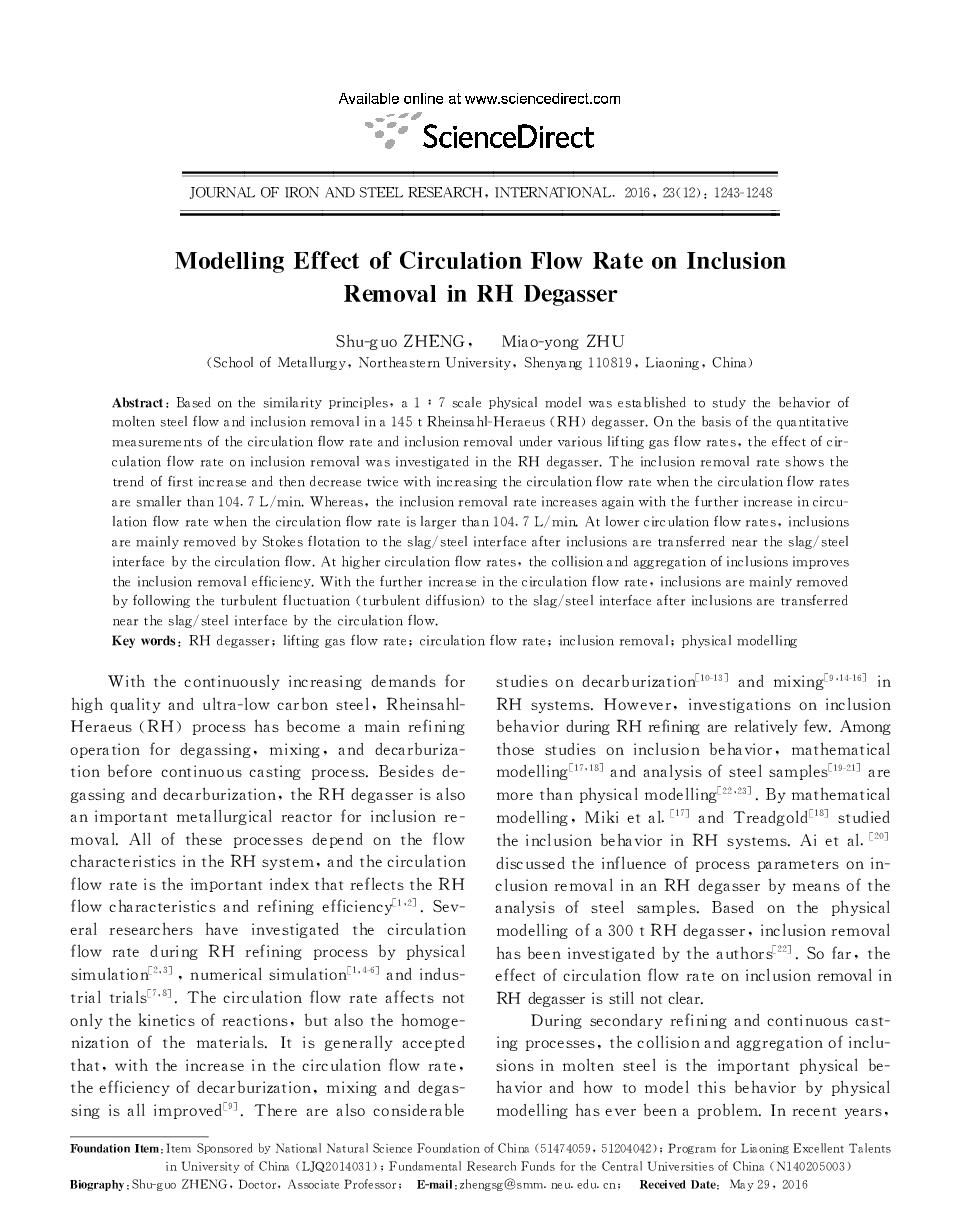| Article ID | Journal | Published Year | Pages | File Type |
|---|---|---|---|---|
| 8004385 | Journal of Iron and Steel Research, International | 2016 | 6 Pages |
Abstract
Based on the similarity principles, a 1 : 7 scale physical model was established to study the behavior of molten steel flow and inclusion removal in a 145 t Rheinsahl-Heraeus (RH) degasser. On the basis of the quantitative measurements of the circulation flow rate and inclusion removal under various lifting gas flow rates, the effect of circulation flow rate on inclusion removal was investigated in the RH degasser. The inclusion removal rate shows the trend of first increase and then decrease twice with increasing the circulation flow rate when the circulation flow rates are smaller than 104. 7 L/min. Whereas, the inclusion removal rate increases again with the further increase in circulation flow rate when the circulation flow rate is larger than 104. 7 L/min. At lower circulation flow rates, inclusions are mainly removed by Stokes flotation to the slag/steel interface after inclusions are transferred near the slag/steel interface by the circulation flow. At higher circulation flow rates, the collision and aggregation of inclusions improves the inclusion removal efficiency. With the further increase in the circulation flow rate, inclusions are mainly removed by following the turbulent fluctuation (turbulent diffusion) to the slag/steel interface after inclusions are transferred near the slag/steel interface by the circulation flow.
Related Topics
Physical Sciences and Engineering
Materials Science
Metals and Alloys
Authors
Shu-guo ZHENG, Miao-yong ZHU,
